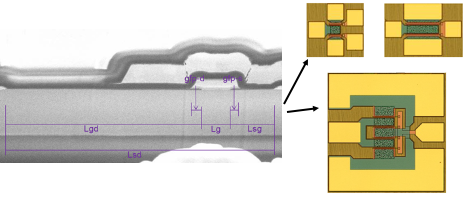Engineering predictable behavior into GaN devices: An approach to accelerating design and optimization

Thousands of transistors within unique devices having varied micrometer-scale physical dimensions were manufactured. The electron micrograph cross section (left) has many possible transistor designs (three examples at right) that were tested over many thermal and electrical loading conditions. See https://doi-org.wrs.idm.oclc.org/10.1016/j.jcrysgro.2019.04.008
Credit:
Air Force Research Laboratory
Created September 2, 2021

